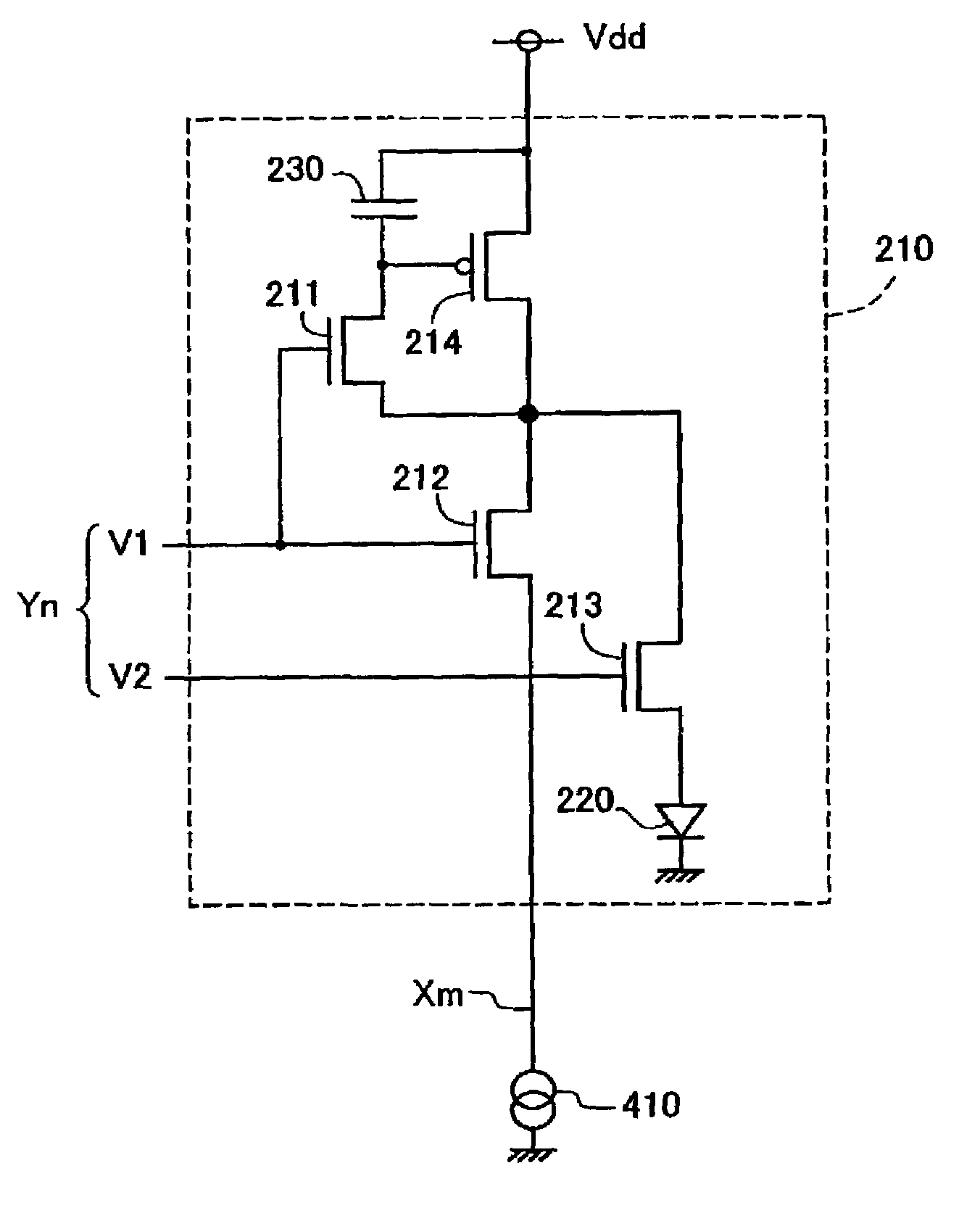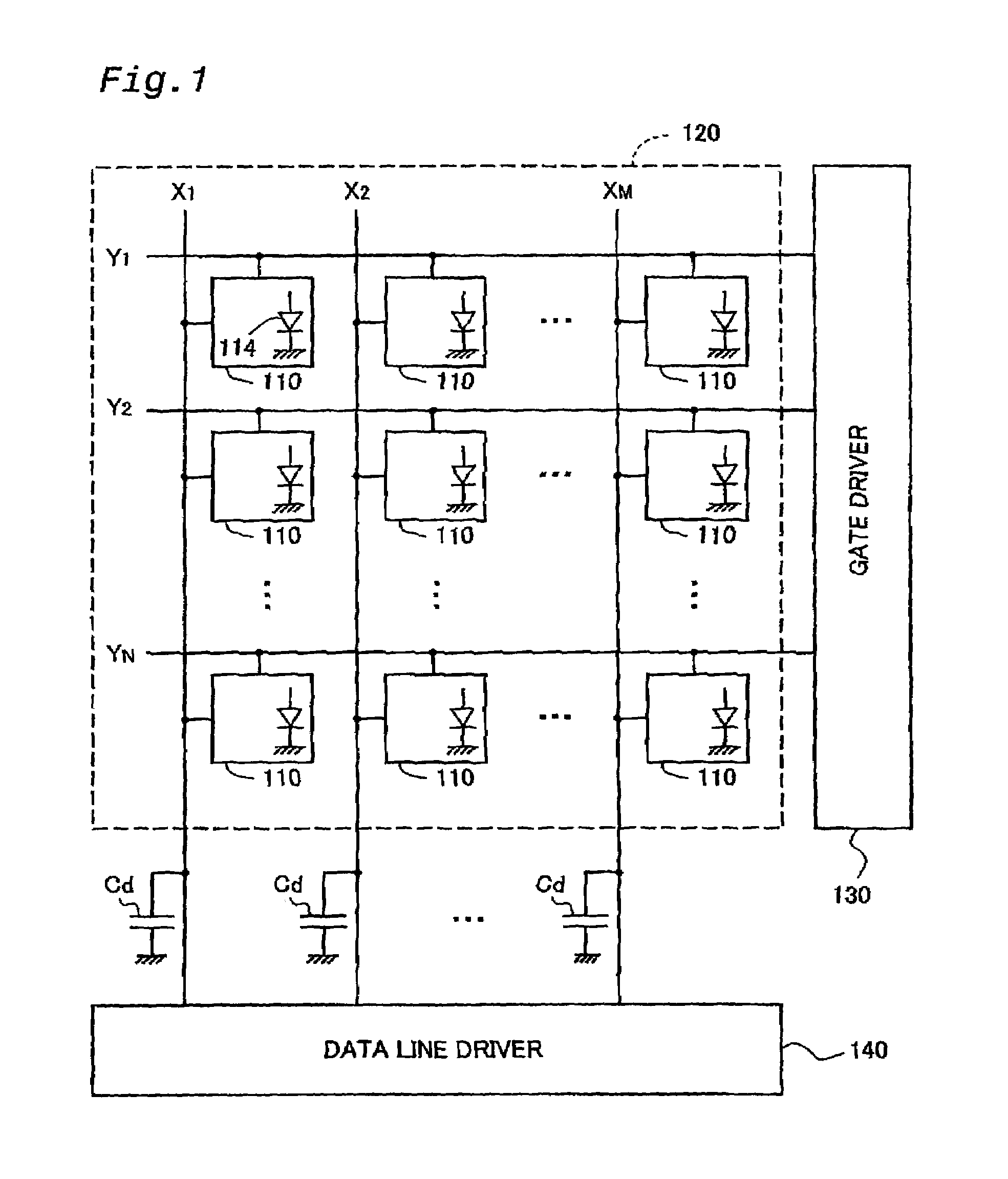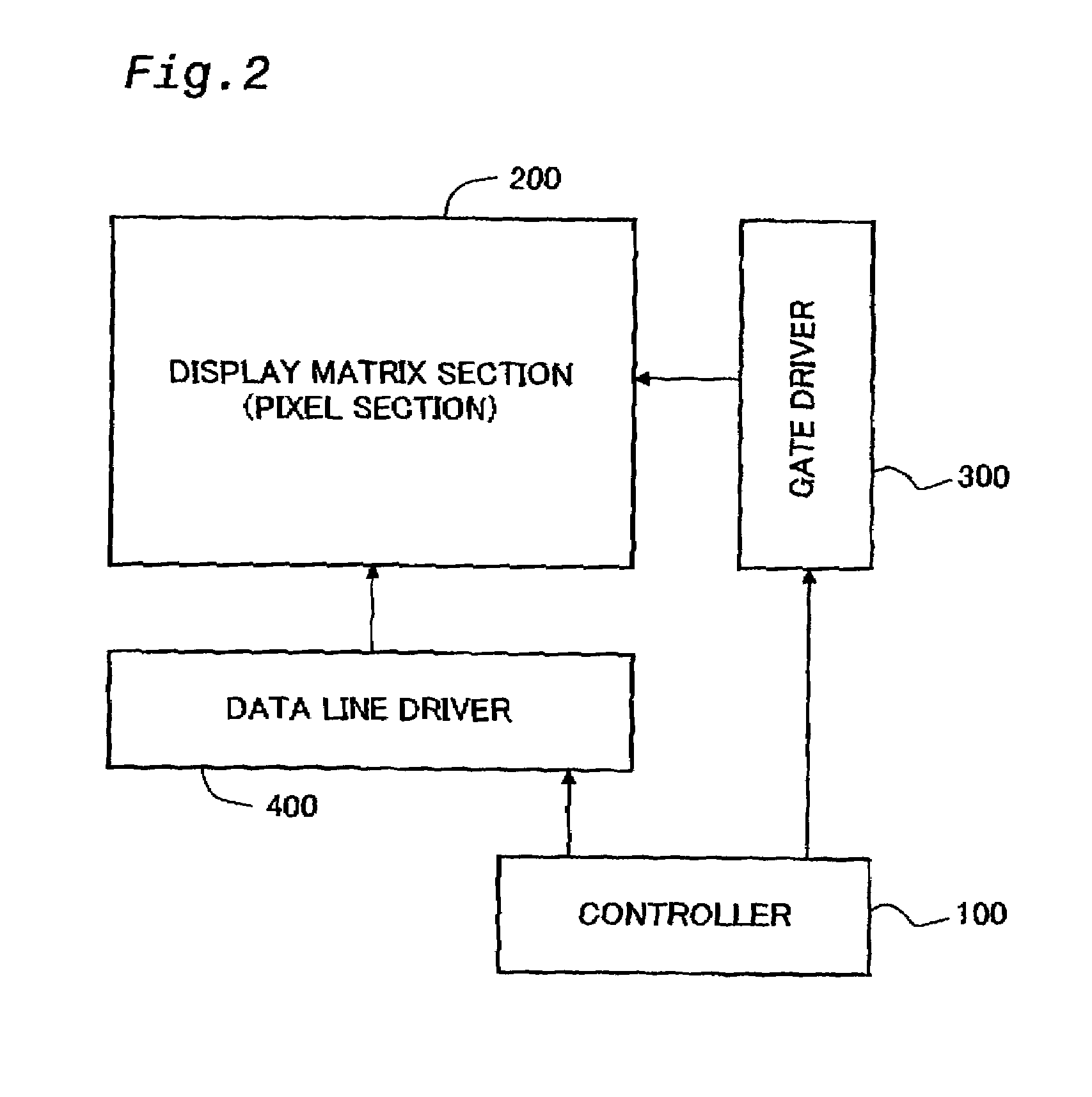Driving of data lines used in unit circuit control
a technology of unit circuits and data lines, applied in static indicating devices, instruments, solid-state devices, etc., can solve the problems of difficult to construct a large display panel using, considerable time required to drive data lines, etc., and achieve the effect of shortening the driving time of data lines
- Summary
- Abstract
- Description
- Claims
- Application Information
AI Technical Summary
Benefits of technology
Problems solved by technology
Method used
Image
Examples
second embodiment (
B. Second Embodiment (Current Addition 2)
[0093]FIG. 10 is a block diagram which shows the schematic structure of a display device as a second embodiment of the present invention. This display device differs from the first embodiment in that a data line driver 400a is installed on the side of the power supply voltage Vdd. Furthermore, as will be described below, the internal structure of the single-line drivers 410a and the internal structure of the pixel circuits 210 also differ from those of the first embodiment.
[0094]FIG. 11 is a circuit diagram which shows the internal structure of one pixel circuit 210a. This pixel circuit 210a is a so-called Sarnoff type current-programmable circuit. This pixel circuit 210a has an organic EL element 220, four transistors 241 through 244, and a storage capacitor 230. Furthermore, the four transistors are p-channel type FETs.
[0095]The first transistor 241, storage capacitor 230 and second transistor 242 are connected in series in this order to th...
third embodiment (
C. Third Embodiment (Current Addition 3)
[0103]FIG. 16 is a circuit diagram that shows one of the single-line driver circuits 410b in a third embodiment of the present invention. The data signal generating circuit 420 inside this single-line driver 410b is the same as that of the first embodiment shown in FIG. 6; however, the structure of the additional current generation circuit 430b differs from that of the first embodiment. Specifically, this additional current generation circuit 430b has two sets of series connections of a switching transistor 43 and driving transistor 42, and these series connections are connected in parallel with each other. For example, the ratio of the gain coefficients βc of the two driving transistors 44 is set at 1:2. The additional current control signal Dp is a two-bit signal in this embodiment. In cases where this additional current generation circuit 430b is used, the additional current value Ip can be arbitrarily set at any of four levels correspondin...
fourth embodiment (
E. Fourth Embodiment (Pre-Charging)
[0110]FIG. 18 is a block diagram which illustrates the structure of a display device as a fourth embodiment of the present invention. In this display device, a pre-charging circuit 600 is installed for each of the data lines Xm (m=1 through M) of the display device of the first embodiment shown in FIG. 3. The remaining structure is the same as that shown in FIG. 3. However, the electrostatic capacitance Cd of the data lines is omitted for the sake of convenience of illustration. Furthermore, circuitry that does not have an additional current generation circuit 430 (FIG. 6) may be used as the single-line drivers 410.
[0111]Pre-charging circuits 600 are respectively connected to each data line Xm in a position between the display matrix section 200 and the data line driver 400. These pre-charging circuits 600 are each constructed from a series connection of a pre-charging power supply Vp which is a constant voltage source, and a switching transistor 6...
PUM
 Login to View More
Login to View More Abstract
Description
Claims
Application Information
 Login to View More
Login to View More - R&D
- Intellectual Property
- Life Sciences
- Materials
- Tech Scout
- Unparalleled Data Quality
- Higher Quality Content
- 60% Fewer Hallucinations
Browse by: Latest US Patents, China's latest patents, Technical Efficacy Thesaurus, Application Domain, Technology Topic, Popular Technical Reports.
© 2025 PatSnap. All rights reserved.Legal|Privacy policy|Modern Slavery Act Transparency Statement|Sitemap|About US| Contact US: help@patsnap.com



